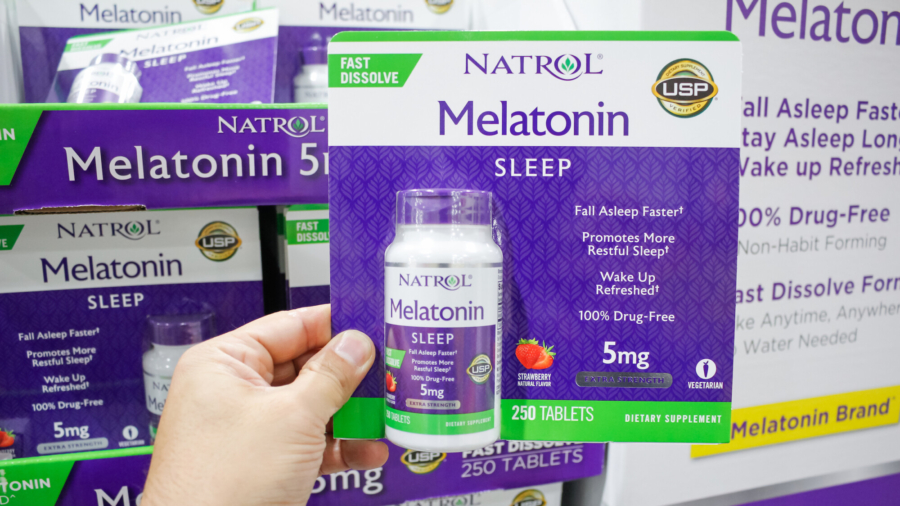The CDC has reported a 530 percent increase in annual cases of melatonin poisoning in children from 2012 to 2021, with increased cases of hospitalizations and adverse effects over the 10-year period.
In 2021, over 52,000 calls were made to U.S. poison centers for melatonin ingestion—over a six-fold increase from a decade earlier—with researchers finding around 95 percent of ingestion cases to be unintentional in children 5 years and younger.
Melatonin is a hormone the brain produces in response to darkness, helping to maintain the normal circadian rhythms.
Formulations of it are widely available as an over-the-counter drug; coming in tablet, capsule, liquid, and gummy forms, with the drug seen as a cost-effective therapeutic alternative to improve sleep without using potentially habit-forming sedative-hypnotics.
From 2016 to 2018, melatonin sales have increased from $285 million to $821 million, increasing the risk of melatonin exposure in children as use and popularity of the supplement grew.
Even prior to COVID-19, when sleep disruptions were on the rise, experts observed “significant increases” in usage of melatonin in U.S. adults.
Examining data from the National Poison Data System (NPDS), the researchers found pediatric melatonin ingestion accounted for around 5 percent of all pediatric ingestions in 2021, a stark increase compared to 0.6 percent in 2012.
The annual rate of ingestions per 100,000 people has also increased over the 10-year period, with over 260,000 cases of melatonin poisoning reported to the NPDS from 2012 to 2021.
While over 80 percent of poisonings were asymptomatic, other children had experiences of vomiting, difficulty breathing, or other symptoms, the Associated Press reported.
Researchers also observed an increase in hospitalization and adverse cases with more than 4,000 hospitalizations, with teenagers who ingested deliberately taking up the majority, while a further five children needed mechanical ventilators with two deaths in children younger than two years old.
Reports of melatonin poisoning were the highest over the pandemic period, with a 37 percent increase from 2019 to 2020.
“Children were upset about being home, teenagers were closed off from friends. And on top of all that everyone’s looking at screens for hours and hours a day,” lead researcher Dr. Karima Lelak told the Associated Press on June 2.
The researchers speculated that the variability in dosage of melatonin supplements may have played a part in hospitalization and severe outcomes, finding 26 percent of supplements at doses that can significantly increase serotonin—a breakdown product of melatonin—a toxicity risk in children.
In the United States, melatonin is unregulated as a dietary supplement, requiring no prescriptions. Researchers argued that the varied dosage recommendation is placing children at risk of potential adverse effects.
The authors called for more research into the causes of increased melatonin ingestion as well as public health education.
“Child-resistant packaging for this supplement should be considered, and health care providers should warn parents about potential toxic consequences of melatonin exposure.”


